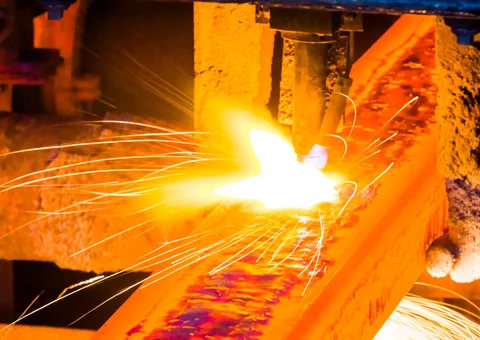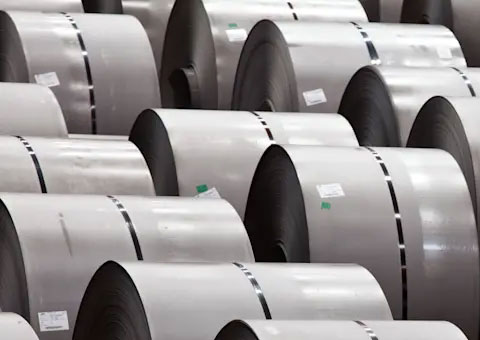In October 2025, German steel enterprises increased steel production by 5.1% compared to the previous month, to 3.13 million tons. Compared to the same month in 2024, the figure decreased by 3%. Production volumes have been declining for the 10th consecutive month on an annual basis. This is evidenced by data from the German Steel Industry Association WVStahl.
Steel production in oxygen converters amounted to 2.17 million tons, which is 4.5% less year-on-year and 4.3% more month-on-month, and in electric arc furnaces – 953 thousand tons (+0.6% year-on-year; +6.9% month-on-month).
Pig iron production in Germany fell by 3.7% in October compared to October 2024 and rose by 0.3% compared to September, to 1.95 million tons. Hot-rolled steel production fell by 10.7% y/y and 5% m/m – to 2.47 million tons.
In January-October 2025, Germany’s metallurgical industry reduced steel production by 9.9% y-o-y – to 28.5 million tons. Oxygen converters produced 19.53 million tons of steel (-12.4% y-o-y), and electric arc furnaces produced 8.97 million tons (-4.1% y-o-y).
Pig iron production fell by 11.6% y-o-y – to 18.02 million tons in the first 10 months. Rolled steel production decreased by 7.1% y-o-y – to 25.01 million tons.
As GMK Center reported earlier, Germany is among the world’s top ten steel producers according to World Steel. At the end of 2024, the country increased its steel output by 5.2% compared to 2023, to 37.23 million tons. Pig iron production for the year amounted to 24.33 million tons (+2.9% y-o-y), and hot-rolled steel production amounted to 31.61 million tons (+3% y-o-y).
Despite the growth in steel production, smelting volumes remained below the 40 million ton threshold for the third consecutive year, which corresponds to the level of recession, according to WVStahl.

